- Home
- Sharyn McCrumb
Elizabeth MacPherson 06 - Missing Susan
Elizabeth MacPherson 06 - Missing Susan Read online
PRAISE FOR SHARYN McCRUMB AND MISSING SUSAN
“McCrumb has a sharp eye for character, especially American tourists abroad, and for setting. Both are used to good advantage in this leisurely mystery, which should be of interest to anyone fond of famous crimes, history and travel.”
Los Angeles Daily News
“Exemplifies the travelogue mystery in its purest form.”
Ellery Queen’s Mystery Magazine
“A treat on several levels. For one thing, the reader gets to experience a first-rate tour of southern England, all in armchair comfort. Interspersed are accounts of true British crimes, a savory lagniappe for crime buffs. And there is the story itself. From the brilliant opening to the ironic twist at the end, Sharyn McCrumb pleases.”
Mostly Murder
“An extraordinary piece of writing from an author whose everyday standard is high to begin with.”
Roanoke Times & World-News
By Sharyn McCrumb:
The Elizabeth MacPherson novels
SICK OF SHADOWS*
LOVELY IN HER BONES*
HIGHLAND LADDIE GONE*
PAYING THE PIPER*
THE WINDSOR KNOT*
MISSING SUSAN*
MACPHERSON’S LAMENT*
IF I’D KILLED HIM WHEN I MET HIM … *
IF EVER I RETURN, PRETTY PEGGY-O*
THE HANGMAN’S BEAUTIFUL DAUGHTER
SHE WALKS THESE HILLS
BIMBOS OF THE DEATH SUN*
ZOMBIES OF THE GENE POOL*
*Published by The Ballantine Publishing Group
Copyright © 1991 by Sharyn McCrumb
All rights reserved under International and Pan-American Copyright Conventions. Published in the United States by Ballantine Books, a division of Random House, Inc., New York, and simultaneously in Canada by Random House of Canada Limited, Toronto.
http://www.randomhouse.com
Library of Congress Catalog Card Number: 91-91887
eISBN: 978-0-307-76130-9
v3.1
For the ladies and Milton;
with thanks to Phyllis Brown
of Grounds for Murder bookstore;
and especially for Martin Fido,
who knows where the bodies are buried.
CONTENTS
Cover
Other Books by This Author
Title Page
Copyright
Dedication
Chapter 1
Chapter 2
Chapter 3
Chapter 4
Chapter 5
Chapter 6
Chapter 7
Chapter 8
Chapter 9
Chapter 10
Chapter 11
Chapter 12
Chapter 13
Chapter 14
Chapter 15
Some of the information on true crime in this book is derived from Murders After Midnight and The Murder Guide to London, both by Martin Fido.
“I love my work and want to start again.”
—LETTER FROM JACK THE RIPPER
September 25, 1888
CHAPTER 1
WHITECHAPEL
IN A DINGY and antiquated district of east London called Whitechapel, the shivering drabs huddled against a faded brick wall, thinking of Jack the Ripper. It was twilight, and a piercing March wind tore through Whitechapel Road, cutting into the bone-chilled mass of humanity camped outside the tube station (District and Metropolitan lines). In the dim circle of light, they clumped against the old building, seeking shelter, ignoring the wino collapsed in a nearby doorway, and talking in hushed tones about the infamous Ripper: the uncaught killer of five women in this dreary stretch of London’s East End. The more knowledgeable ones speculated on the identity of the dreaded killer, debating whether they would have been clever enough to elude his deadly grasp. Others wondered if they had been wise to brave the dangers of Whitechapel in the bitter chill of night. The rest, numbed by the gathering darkness, merely waited.
From the shelter of a nearby shop, cupping his last cigarette of the twilight hour, he watched them, sizing them up as a wolf might survey a flock of Dorset ewes. There were a good many of them tonight, despite the cold. They came every night, even when slags of rain turned the alleyways into a sodden blur. His eyes narrowed as he singled out the likely ones: the young, the vaguely pretty, or, if all else failed, the flashy ones on the make. After a few moments’ study, he could surmise which of them traveled alone, which were timid and eager to please, and which might be more trouble than he cared to have. Eliminating the latter from his reckoning and concentrating on the first two requisites, he decided that the group offered three or four possibilities. The choice would narrow down as the night wore on. He was ready now. He knew them as well as he cared to. They were always much the same in Whitechapel. Night after night, rain or hunter’s moon: much the same.
He threw the smoldering remnant of the cigarette on the pavement, ground it out with his heel. His eyes never left them. Hurry, before the cold drives the weak ones back into the Underground. He drew one last anticipatory breath. Ready now. Move in for the kill.
Striding briskly toward the milling crowd, he raised one hand above his head and motioned for them to gather round. “Good evening, ladies and gentlemen!” he said in his heartiest stage voice. “Welcome to the Jack the Ripper tour. My name is Rowan Rover, and I am your guide for this evening. That will be three quid, please, everyone!”
A bewildered woman in a Penn State ski cap rummaged through her purse and held out a handful of coins. With Olympian dignity Rowan Rover indicated the proper currency and intoned, “That will be three of the little round bronze ones, madam. Yes, they are rather like your American quarters, aren’t they?”
Jack the Ripper, the Scourge of Whitechapel, killer of five aging prostitutes in the autumn of 1888, had been abstaining from mayhem for one hundred and one years and four months, but his sinister presence was still felt in the east London thoroughfares between Houndsditch and Brick Lane. He was, in fact, a cottage industry, supporting—within his native borough—an inordinate number of tour guides, crime enthusiasts, T-shirt makers, and pub owners. Indeed, had a superannuated Ripper appeared on the old turf, brandishing his bloody knife and proclaiming his guilt, the local residents might have been impelled to call the police, but many would also have felt obliged to stand the old boy a round of drinks while awaiting the law’s arrival.
Rowan Rover, tour guide and criminologist extraordinaire, owed much to Jack the Ripper. Not that he approved of butchering women, you understand—he himself was a lady-killer only in the metaphorical sense—but in an intellectual way, he had always been interested in tales of true crime, particularly in the enigmatic Jack. A century after the fact, the abomination of the Whitechapel slayings had dimmed to a nostalgic and scholarly absorption in criminology’s greatest mystery. Besides, the public’s morbid fascination with history’s most famous serial killer had enabled a poor but clever Oxford alumnus to escape the thin gray line of academia (in Wisconsin, Guyana, and Sri Lanka) after years of teaching English lit. to the unwashed, the unpromising, and the uninterested; and to return to his native England in untenured triumph.
Rowan Rover had thus escaped the wrath of two ex-wives (the third lived perilously close—in Glasgow—but you couldn’t have everything), and he had put his upper-class English lecture voice and his teaching skills to more glamorous use: leading murder walks around London and giving seminars on English true crime. It was steady work: the Ripper tours drew a crowd in even the most inclement weather; and the exercise of a two-mile walk five nights a week had kept him as fit as a man half his age, despite his ince
ssant smoking. It was not, however, an inordinately profitable way to earn a living, educating tourists at three pounds a head. Still, it provided him with a subsistence, an admiring audience to buy his book and to stand him drinks at the pubs he cleverly wove into each evening’s walk, and an occasional one-night stand gleaned from the pack of sightseers. No danger of one of those tourist birds becoming Wife Number Four; most of them were due to leave London only hours after their brief encounter, probably returning to husbands or lovers back home. Rowan Rover was always the first to agree with these birds that traveling did not actually count as part of one’s real life.
It was an agreeable existence, all in all. Or it would have been, if he could have catered to his own pure and simple needs and left it at that. Unfortunately, as an older Oxonian, Oscar Wilde, had put it: “Life is rarely pure, and never simple.” In Rowan Rover’s case, the complications involved child support payments to Wife Number Three; hefty public school fees for Sebastian Melmoth Rover, his son by Wife Number One; and some expensive recaulking required by Rowan’s boat, in order to keep afloat the residence that allowed him to live in London without paying the rates demanded by the city’s demented estate agents. He lived in a cabin cruiser moored at St. Katharine’s Dock, an abode roomy enough for one person, yet sufficiently cramped to discourage any woman from wanting to share it for more than a day or two. Now, though, thanks to a harsh winter in corrosive Thames water (which contained God knows what, these days), the boat needed repairs, or else Rowan might find himself sharing a locker with Davy Jones. And Sebastian’s school fees were to be raised by ten percent beginning next term.
These debts looming on his personal horizon were of such magnitude that they didn’t bear contemplation. It was useless to think that giving up the odd pack of cigarettes or setting aside his pub money would stem the tide of insolvency. Before the summer was out, Rowan Rover stood in actual danger of having to go out and secure a real job. Or at the very least, a teaching position. This prospect so profoundly depressed him that he resolved not to dwell on his financial situation if he could possibly help it. He had purchased a book called Do It Yourself Boat Repair, but its illegible technicality had only increased his despair. Life, he told himself, had been simpler in the Ripper’s time, what with no income tax, and drinks to be had for a penny. Doubtless the Ripper would have agreed with him. In 1888 there had been no fingerprinting or DNA testing. Why, in those halcyon days a man could get away with murder.
The tour began at the Whitechapel tube station, thus allowing tourists from all over the city a convenient means of transport to the starting point. It was also ideally situated for introducing a note of delicious dread at the onset of the tour. A few yards from the entrance to the Underground was a narrow alley leading to Durward Street; it had been called Bucks Row a century ago, when Polly Nicholls’ mutilated body had been discovered there with her throat cut. The Whitechapel residents had petitioned to change the street’s name a few weeks after the murder of Nicholls, the first of the Ripper’s victims.
Rowan Rover made his introductory remarks where the group convened on Whitechapel Road, giving a general overview of the Ripper tale for those tourists who had only a vague idea of the case.
“Isn’t it a bit anachronistic to have us arrive by subway?” asked a Canadian professor.
Rowan Rover attempted to disguise his sneer as a cheery smile. “Actually, the Metropolitan Line of the Underground was completed in 1884,” he said with the briskness of one to whom the question has become a commonplace. “That’s four years before the murders occurred. Jack himself might have used the tube you just arrived on.” Unless you’re daft enough to think he was the Duke of Clarence, he finished silently.
Having thus intimidated the self-styled experts in the party, Rowan continued his spiel. “In the autumn of 1888, a killer who was to become known as Jack the Ripper killed five prostitutes. No, not seven”—he added with a nod to the waving hand at the back of the group—“we’ll go into that later. That left approximately 79,995 common prostitutes still alive and busy in the East End of London at that time. It was a dreadful time and a dreadful place. Let me give you an idea of what it was like.” He proceeded to paraphrase a few shocking anecdotes from Jack London’s Children of the Abyss, touching on the thirty thousand homeless, the workhouses, and the living conditions of the nineteenth-century poor. Rowan took pride in imparting social awareness in addition to the prurient thrills of the tour.
“There are those who contend that the Ripper was a social reformer,” he told them. “At the time, George Bernard Shaw wrote a letter to the Star stating just that. Certainly the Ripper did more to focus attention on the East End than all the do-gooders in all the charities combined. The murders forced the authorities to pay attention to the appalling conditions in the slums, and some aspects of East End life actually improved as a result of the Ripper’s work.”
The staring crowd digested this thought in silence. Finally a woman said hesitantly, “Do you think …”
“That the Ripper was a zealot with a social conscience?” asked Rowan Rover. “No. That’s complete rubbish. Move along now, please.”
After discouraging more of the usual anticipatory questions about the identity of the Ripper, he led the group to the alley where the evening’s sightseeing—and the murders-began.
“It was here that Jack the Ripper met his first victim: Mary Ann Nicholls. Polly, as she was known. She was nobody’s idea of a beauty. Fortyish. Looked sixty. Sallow complexion, mouse-brown hair. Five teeth missing from a brawl with another prostitute. He led her away from the busy Whitechapel Road, and through this alley to Bucks Row.” Rowan Rover shepherded the group through the narrow passage.
He liked to linger in the squalid confinement of the brick-lined alley, urging his charges to get the feel of the East End as it once was, in all its unsavory glory. The ammonia stench from the encrusted walls usually warned the tourists to keep their distance, but in case they were too preoccupied to notice, he was always careful to admonish his flock not to touch the walls as they passed through. Less respectable pedestrians than themselves visited that alleyway for reasons that wouldn’t bear thinking about, he told them, nodding toward another wino. After his warning, they proceeded single file, making narky comments about the local citizenry.
Still, he was glad for a bit of sordidness at the beginning of the tour, because the fact was that the dreadful slum of the Ripper era had almost completely disappeared. In place of the grimy clusters of tenements that had once harbored the East End poor, there were now newly erected brick office buildings, and wide well-lit streets, much to Rowan’s regret. It didn’t make his job any easier. After a couple of double Scotches at the Ten Bells, Rowan Rover had been heard to remark that if the Whitechapel district had any interest in preserving the unique character of their infamous tourist attraction, they should tear down all those characterless modern office buildings and put up rotten, reeking tenements. That’s what tourists wanted to see when they came to Whitechapel! Failing civic cooperation of such magnitude, Rowan had to darken the tour as best he could with dramatic descriptions of the bygone squalor, and by reciting, with BBC solemnity, graphic accounts of the Ripper’s handiwork. He set the tone of the murder walk in the longish trek from Bucks Row to Hanbury Street, where the body of Annie Chapman had been discovered in the backyard of Number 29, one week after the Nicholls murder. The death site is now occupied by Truman’s Brewery, just opposite a nice tandoori restaurant.
By now Rowan Rover was beginning to size up his audience. There was the usual assortment of Americans, crime buffs, adventurous Londoners, and earnest Japanese tourists. He had recited the particulars of the Ripper tour so often that he could conduct it almost entirely on automatic pilot, so that while the group was hearing him say, “Annie Chapman’s face was bruised and the tongue protruded from her mouth. She had also been disemboweled …” he was actually thinking: Three more minutes until we reach the Ten Bells. Must take care not t
o sit with that beefy woman who wants to talk about her sodding Duke of Clarence theory. The Welsh chap looks like he might stand me a drink, but what about the lovely blonde in the Burberry? She’s been dogging my heels since we started. I could ask her back to the boat on the pretext of discussing …
A hand touched Rowan Rover’s arm, startling him to full consciousness. He turned to see a tall, well-dressed American regarding him with an expression of quiet urgency. Rowan had mentally tagged him The Businessman, and wondered what had possessed him to come on a Ripper tour. He wasn’t the usual type; at least, not without a teenager or a few tipsy colleagues in tow.
“Mr. Rover, I wonder if we could have a talk before the evening is over,” the man said, in a voice one degree above a whisper.
Various scenarios flashed through Rowan’s mind: the man was a publisher, soliciting a Ripper book; he was a journalist doing a Ripper article and wanted a contemporary slant; he had a boat of his own and his taste in companions differed markedly from Rowan’s. A closer look at this solemn middle-aged gentleman convinced him that none of these theories was correct. What the hell did he want? Rowan summoned a polite smile. “Why, certainly,” he said. “The tour will conclude at a pub in Aldgate, and perhaps you’d care to stay on after that and chat.” He regretted having to part with the idea of trying his luck with the blonde, but his curiosity had got the better of him. As long as the proposed conference was confined to the Aldgate pub, and the businessman provided the drinks.
The man smiled back. “That will be fine,” he said. “I’ll talk to you then.”
After the Chapman death site, the tour took a half-hour intermission so that the freezing tourists could rest their feet and thaw out. The scene of the rest stop was the Ten Bells Pub in Spitalfields, where Ripper victim Elizabeth (Long Liz) Stride was seen drinking on the night that she later turned up murdered in Berners Street. Rowan ushered his charges inside, explaining in a voice of careful neutrality that while the pub had been called the Ten Bells at the time of the Ripper murders, its name had subsequently been changed, and it had until recently been called the Jack the Ripper Pub. A group of protesters had succeeded in forcing the resurrection of the original name on the grounds that a pub named after the Ripper encouraged violence against women.

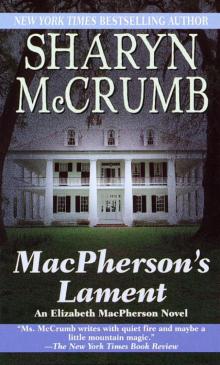 Elizabeth MacPherson 07 - MacPherson’s Lament
Elizabeth MacPherson 07 - MacPherson’s Lament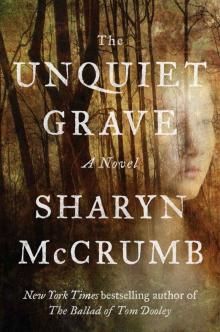 The Unquiet Grave: A Novel
The Unquiet Grave: A Novel The PMS Outlaws: An Elizabeth MacPherson Novel
The PMS Outlaws: An Elizabeth MacPherson Novel Prayers the Devil Answers
Prayers the Devil Answers Paying the Piper
Paying the Piper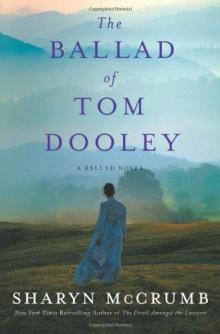 The Ballad of Tom Dooley: A Ballad Novel
The Ballad of Tom Dooley: A Ballad Novel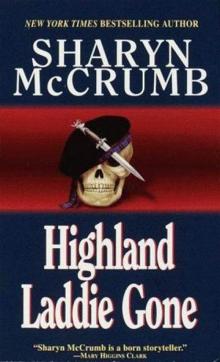 Highland Laddie Gone
Highland Laddie Gone The Unquiet Grave
The Unquiet Grave The Devil Amongst the Lawyers
The Devil Amongst the Lawyers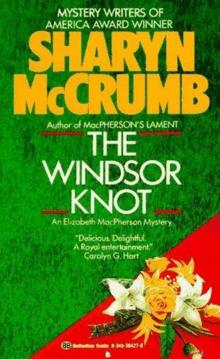 The Windsor Knot
The Windsor Knot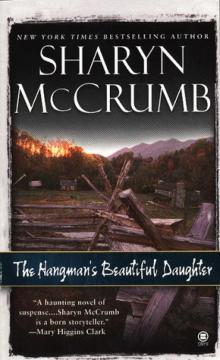 The Hangman's Beautiful Daughter
The Hangman's Beautiful Daughter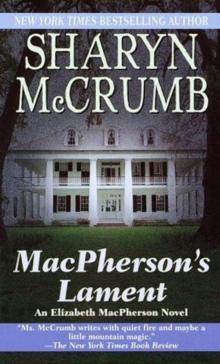 MacPherson's Lament
MacPherson's Lament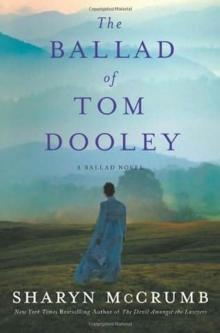 The Ballad of Tom Dooley
The Ballad of Tom Dooley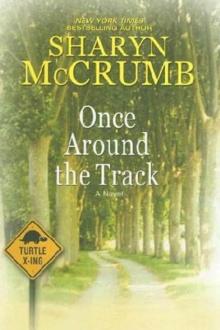 Once Around the Track
Once Around the Track St. Dale
St. Dale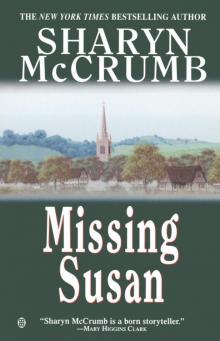 Elizabeth MacPherson 06 - Missing Susan
Elizabeth MacPherson 06 - Missing Susan If I'd Killed Him When I Met Him…
If I'd Killed Him When I Met Him…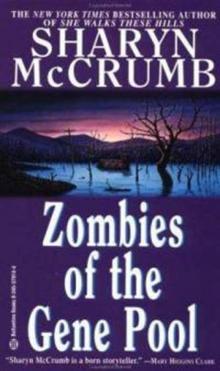 Zombies of the Gene Pool
Zombies of the Gene Pool Bimbos of the Death Sun
Bimbos of the Death Sun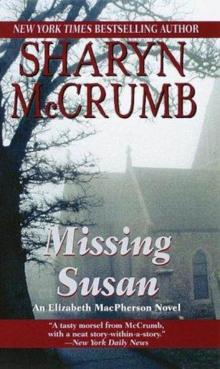 Missing Susan
Missing Susan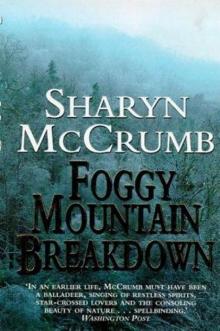 Foggy Mountain Breakdown and Other Stories
Foggy Mountain Breakdown and Other Stories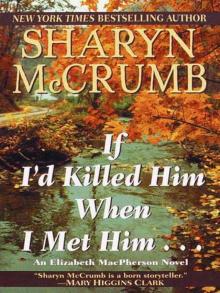 If I'd Killed Him When I Met Him
If I'd Killed Him When I Met Him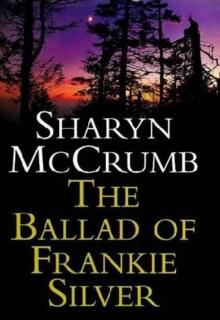 The Ballad of Frankie Silver
The Ballad of Frankie Silver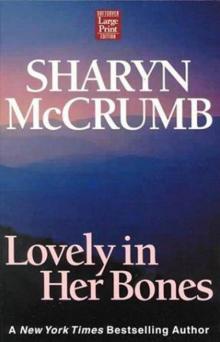 Lovely In Her Bones
Lovely In Her Bones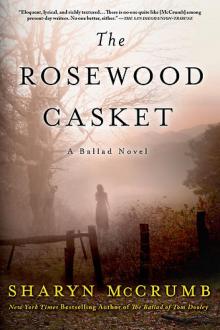 The Rosewood Casket
The Rosewood Casket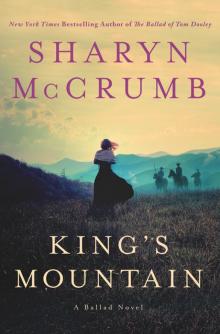 King's Mountain
King's Mountain